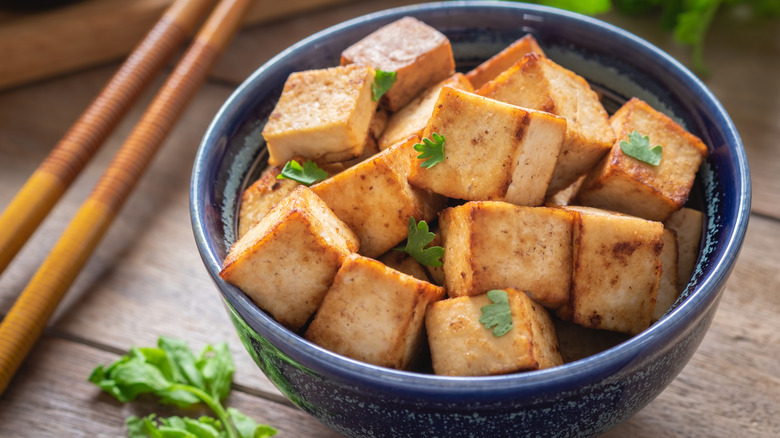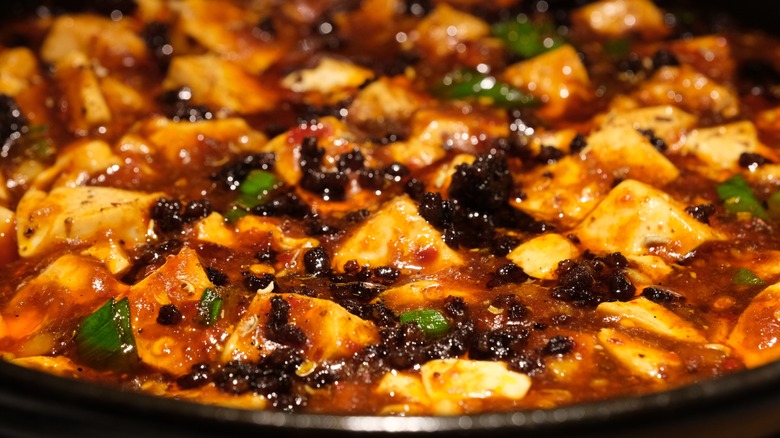Why You Should Pour Boiling Water Over Tofu
If you know nothing else about tofu, you probably know that it doesn't taste like much on its own. Because of that, though, it's a great canvas for taking on other flavors in a recipe. With a bit of know-how and willingness to take extra steps to achieve delicious home cooking, tofu can truly shine. The key to unlocking tofu's natural flavor is to mitigate the flavorless component so prevalent in every brick: water. Many insist on pressing the tofu to squeeze out the water, but that can have inconsistent results and is impossible to do with soft tofu. The more effective method to remove the extra moisture is to pour boiling salted water over cubes of tofu in a strainer.
While that sounds counterintuitive, there is some scientific method to the madness. When boiling salted water makes contact with tofu, both the salt and the heat of the water work their magic. The salty bath draws water out as a result of osmosis and tightens the proteins on the surface to help keep moisture inside. After thoroughly drying with paper towels, the result is tofu that can crisp up more effectively in the pan, while still remaining soft and springy in the middle. Alternatively, home cooks can submerge the tofu in a pot of simmering salted water, but be careful not to boil it or you might make the tofu tough. These methods have the added benefit of lightly seasoning the tofu to get it ready for cooking, and they can be applied to both soft and firm tofu. Just be careful when handling very soft tofu, because it is quite fragile.
How to cook tofu after removing its moisture
There are many ways to cook with tofu, but if you'd like to achieve crispiness via pan frying, the salt-water method is perfect — as long as you're using firm tofu to begin with, because there is no way you're getting a good sear on soft tofu. After the salted water bath, pat your cubes or strips of tofu thoroughly with paper towels to remove any surface moisture. Get your oil nice and hot and lay your pieces of tofu in a nonstick pan for a shallow fry. Once fried for a few minutes on both sides, the tofu develops a golden brown crust while still maintaining a moist center. Once crispiness has been achieved, you have the option to season the tofu with a spice mix or coat it in a wide variety of sauces. You can add the tofu to a vegetable stir fry, Thai red curry, or just eat it as is with a dipping sauce.
If you use silken tofu, you won't get a crispy surface, but the simmering water method still works in many recipes. You can spoon the tofu right into the gently simmering salted water. The tofu will be warmed through, still soft, but set enough that it can hold its shape better when transferred to the spicy sauce. This is another way to showcase the transformative power that hot salt water has on tofu, especially in enhancing the texture of an otherwise monotonous protein.

